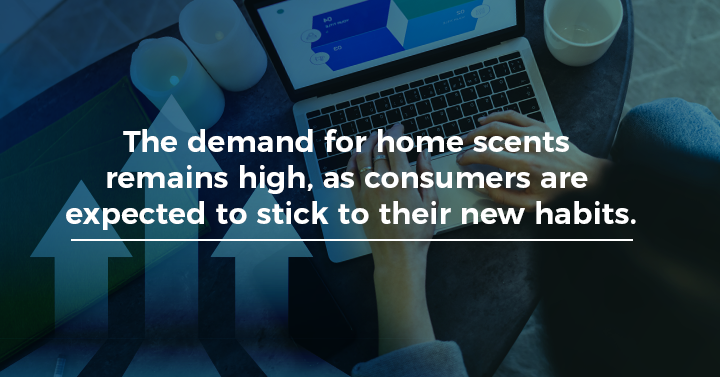The pandemic ignited a renaissance for the home fragrance industry as consumers acquired a new appreciation for home scent while spending more time in their personal spaces. As we conclude research on this dynamic market for our 23rd edition in our Home Fragrances: U.S. Market Brief report series, we are anticipating the market to achieve a 17% increase in retail sales or greater, with candles notably outperforming the market. Historically, this mature market has recorded relatively steady growth, averaging a 3.5% increase in sales annually from 2014-2019. In 2020, the story was significantly brighter, as the unprecedented increase in demand for candles, coupled with consumers gravitating toward larger sizes and therefore higher price points despite the economic climate, led to the market’s unpredictable sales surge.
The at-home wellness, self-care, and home improvement narratives inspired consumers to lean into these products during quarantine in April and May, which are typically slower months in the candle trade compared to the holiday season. Luxury marketers like NEST and LAFCO, traditionally selling products in department stores and gift and specialty channels, were suddenly tasked with the ability to pivot online as the market observed a new wave of e-commerce sales. Meanwhile, the dynamic was just as strong in essential retail outlets like Target, with products flying off the shelves as candle enthusiasts and newbie home fragrance shoppers stocked up on these products while shopping for everyday basics and pandemic essentials.
Even after non-essential retail began to reopen, the demand for home scent remained high, creating strong traction for brick-and-mortar sales in the second half of the year through non-essential outlets like Bath & Body Works stores. Additionally, the momentum of e-commerce sales sustained, and this especially gave visibility to emerging brands like Boy Smells and OTHERLAND, as well as celebrity brands like KKW FRAGRANCE, entering the high-growth market.
So what are we seeing in 2021? Growth is not slowing down quite yet, and brands are strategically diversifying distribution. For example, home fragrance guru Harry Slatkin has expanded into Home Depot with his AromaHome by HS Worx brand, reaching consumers that upgraded their homes during the pandemic and are likely to maintain their at-home habits to a certain extent in the short term. Home fragrance marketers, like Gibson & Dehn, are also expanding their horizons and leaning into fast-moving areas like personal care and body care. Additionally, beauty brands are seeing opportunity in the space, with brands like Aēsop and KOPARI recently making their debuts in the candles category.
Despite the continued energy in the market, questions still exist around what impact increased travel, a return to the workplace, and supply shortages for materials like glass candle vessels (which began in the second half of last year) will have on the market’s performance in 2021 and 2022. Kline’s Home Fragrances: U.S. Market Brief, to be published by the end of June, will anticipate these challenges with an outlook by year to 2025 for the total market and by product category, including candles, diffusers, room sprays, and fragrance oils and wax melts.

